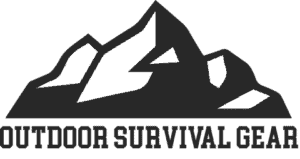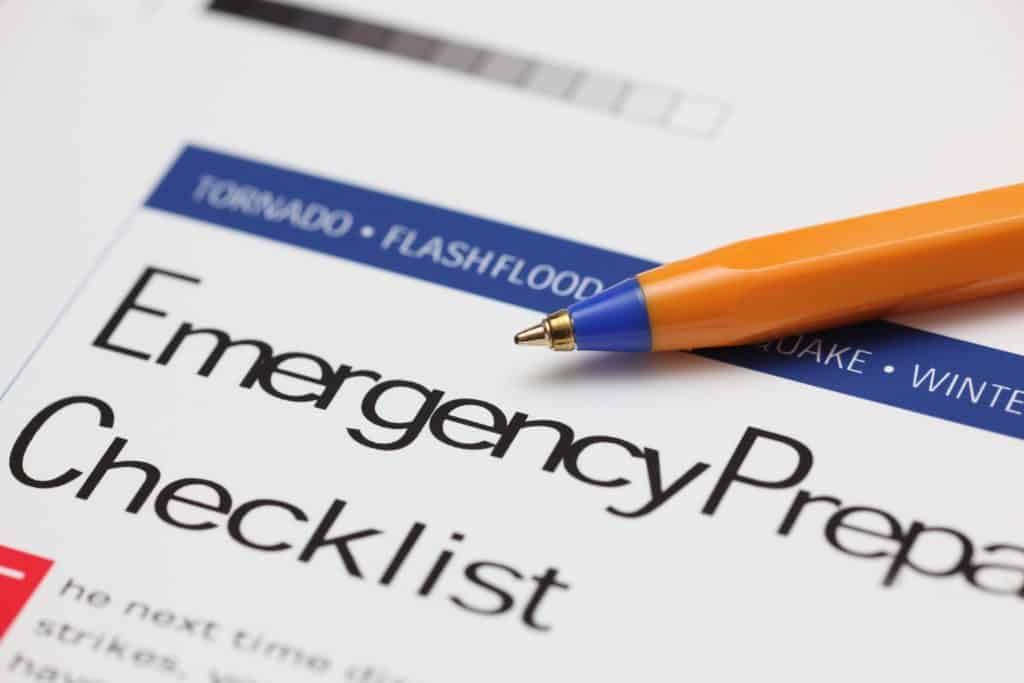FEMA Strongly Encourages Everyone To Be Prepared
One of my favorite articles on the FEMA (Federal Emergency Management Agency) website is called:
Emergency Preparedness Is A Year-Round Responsibility
“Everyone should have an emergency kit with enough supplies to survive for 10 days, including water, non-perishable food, non-electric can openers, flashlights, batteries, cash, and important family documents. Children also should be allowed to include favorite small toys or games.”
According to Dictionary.com
A prepper is “a person who believes a catastrophic disaster or emergency is likely to occur in the future and makes active preparations for it, typically by stockpiling food, ammunition, and other supplies.”
What Is A Prepper?
I believe the word prepper has evolved over the years. Even though there are still some people that think a “catastrophic” event is coming, most preppers are people that just want to protect themselves and their families from any rough times that might come their way. Now, that could be a natural disaster, but it could also be a job loss or even something as simple as a short power outage. Your level of preparedness is up to you. What concerns me is that the word prepper has a kind of negative, “crazy person” type connotation around it. This pushes people away from any level of preparedness. If you buy insurance, you’re a prepper. If you have food in your cupboards, you’re a prepper. If you do anything to be a little more prepared for the eventualities of life, you are by definition a prepper. If you’re just getting into “New Aged Prepping” and don’t really know where to start, this helpful guide will walk you through the beginning steps and put you on the right path, no matter what level of preparedness you want to achieve.How do I Become a Prepper?
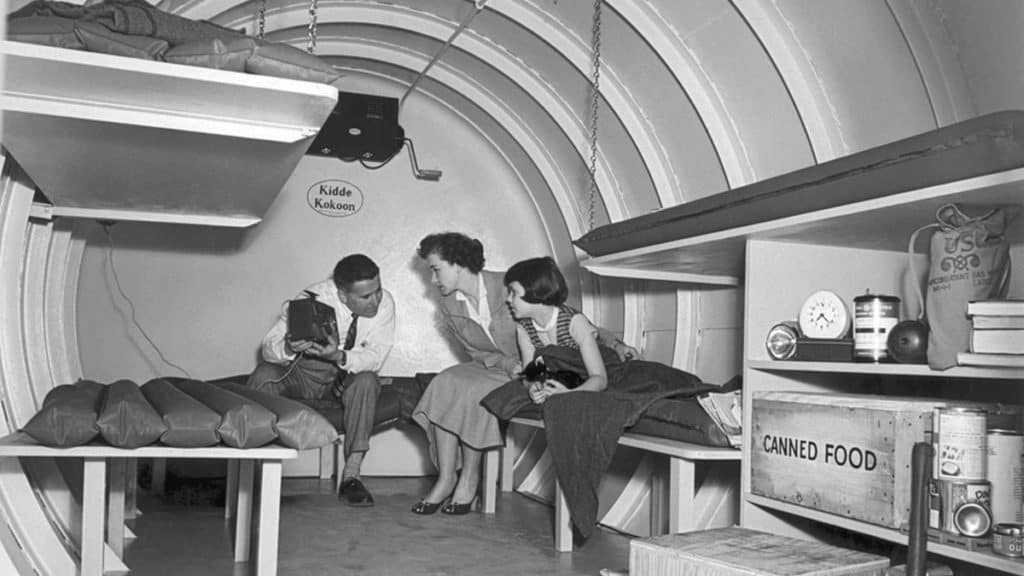 There are 10 easy steps that will help you start your preparedness journey. There is no time limit or quantity set behind each step, but according to FEMA, it is recommended that you have at least 10 days of supplies on hand. I think you should have more like 3 weeks or 3 months of supplies if your finances and situation permits.
If you survive through a tornado, hurricane, or an earthquake, it could take up to 3 weeks to get your power and or gas back on. If that’s the case for you, it’s also the case for your neighbors. If you store 3 weeks or 3 months worth of supplies, you can come to the aid of your neighbors that might need additional help.
There are 10 easy steps that will help you start your preparedness journey. There is no time limit or quantity set behind each step, but according to FEMA, it is recommended that you have at least 10 days of supplies on hand. I think you should have more like 3 weeks or 3 months of supplies if your finances and situation permits.
If you survive through a tornado, hurricane, or an earthquake, it could take up to 3 weeks to get your power and or gas back on. If that’s the case for you, it’s also the case for your neighbors. If you store 3 weeks or 3 months worth of supplies, you can come to the aid of your neighbors that might need additional help.
An 8 Step Guide To Preparedness For Beginners
1- Ideation Period
What Areas Are You Most Concerned About? Depending on what area of the country (or the world) you live in, you might be more prone to certain types of natural disasters, terror attacks, sickness, and more. You also have to consider the uniqueness of your family. You might have a lot of kids, or no kids, or have your parents living with you. Consider the specific types of medication you’ll need to have on hand. What about an extra pair of glasses or some extra contact solution? Think about all areas of your life and what you will need over the 3 week period when your power is out. You should build your preparedness plan around your specific location and situation. Create A Plan And A Budget And Stick To It. **Don’t get overwhelmed** Use the steps below to help you build out your full preparedness plan. After you have a plan written down, create a budget for the plan. DO NOT GET OVERWHELMED. You should plan a budget that is suitable for you and your current situation. If that means $25 per month, then stick with $25 per month. You do not need to go into debt for this. Prioritize your plan and buy what you can with your allotted budget each month.“All you can do is all you can do. But, all you can do is enough”. – Art Williams
2- Water Storage
Buy And Store Plenty of Water (And Water Filters) You can survive 3 weeks without food, but only 3 days without water. This is by far your most important purchase in this process. It’s pretty simple to stock up on a few weeks of water if you get creative. Ready.gov recommends that you store one gallon per day per person. The more you can store the better.“Store at least one gallon of water per person per day…, for drinking and sanitation. A normally active person needs about three-quarters of a gallon of fluid daily, from water and other beverages. However, individual needs vary, depending on age, health, physical condition, activity, diet and climate.
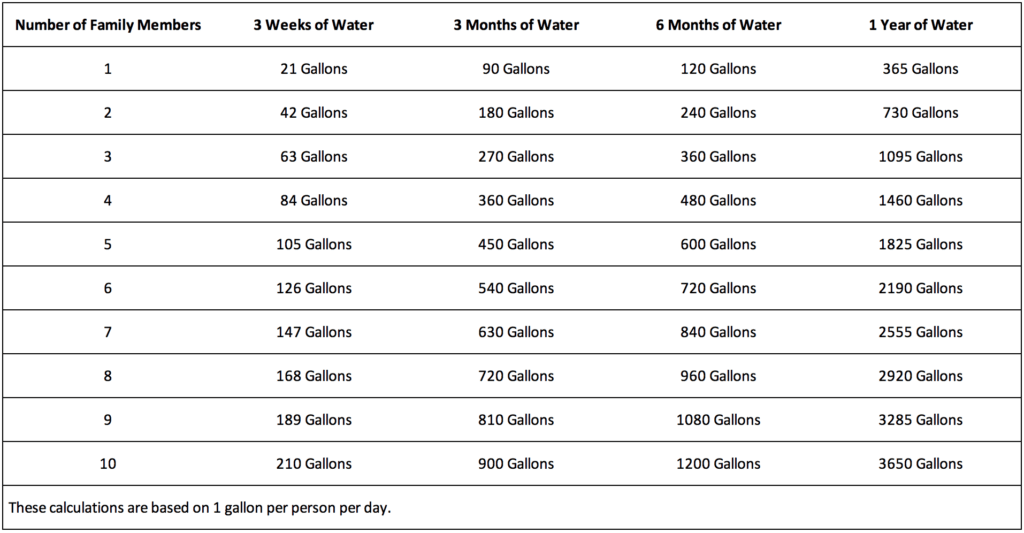 Option 1: I would start out buying a few cases of water bottles. As long as they’re stored out of direct sunlight, and not on the concrete, they should last you a few years.
Option 2: I would then purchase a few 5-gallon food-grade water containers. Fill these up with house water (already filtered and treated) and put one in each closet of the house. Trust me, you’ll forget they’re even there.
Option 3: Buy a few 15-gallon drums and fill them with house water (already filtered and treated). You can either put these in closets, under the stairs or in the garage. Remember, do not store any water containers directly on the cement. The chemicals in the cement can seep up into the water through the plastic. This is not safe. You can store them on a palate or any other type of wood.
Option 4: Get your hands on some blue 55-gallon water drums. You can usually find these for pretty cheap on your local classifieds website. They will come used, but as long as you make sure they have only been filled with unharmful liquids, you will be fine. Most of the time I find them filled with soda pop syrup. Buy them and give them a good rinse. After that, you should be fine to fill them up with water. If you can fill them with the already filters and treated water, that would be better. Most water spouts coming directly from the house offer this kind of water. If not, then you’ll want to treat them with some bleach. *See bleach to water calculation below.
Option 5: Get your hands on a bigger food-grade water container and fill that sucker up. They do make these containers that fit well in your basement, but I find that they don’t work for everyone.
Option 6: Buy some water filters to help just in case you run out of your stored water and you need to clean the water from a nearby lake or stream. I recommend the Sawyer Water Filter. It cleans up to 100,000 gallons of water.
The formula is: “To use household bleach for disinfecting water: Add two drops of bleach per quart or liter of water. Stir it well. Let the mixture stand for a half hour before drinking.”
Option 1: I would start out buying a few cases of water bottles. As long as they’re stored out of direct sunlight, and not on the concrete, they should last you a few years.
Option 2: I would then purchase a few 5-gallon food-grade water containers. Fill these up with house water (already filtered and treated) and put one in each closet of the house. Trust me, you’ll forget they’re even there.
Option 3: Buy a few 15-gallon drums and fill them with house water (already filtered and treated). You can either put these in closets, under the stairs or in the garage. Remember, do not store any water containers directly on the cement. The chemicals in the cement can seep up into the water through the plastic. This is not safe. You can store them on a palate or any other type of wood.
Option 4: Get your hands on some blue 55-gallon water drums. You can usually find these for pretty cheap on your local classifieds website. They will come used, but as long as you make sure they have only been filled with unharmful liquids, you will be fine. Most of the time I find them filled with soda pop syrup. Buy them and give them a good rinse. After that, you should be fine to fill them up with water. If you can fill them with the already filters and treated water, that would be better. Most water spouts coming directly from the house offer this kind of water. If not, then you’ll want to treat them with some bleach. *See bleach to water calculation below.
Option 5: Get your hands on a bigger food-grade water container and fill that sucker up. They do make these containers that fit well in your basement, but I find that they don’t work for everyone.
Option 6: Buy some water filters to help just in case you run out of your stored water and you need to clean the water from a nearby lake or stream. I recommend the Sawyer Water Filter. It cleans up to 100,000 gallons of water.
The formula is: “To use household bleach for disinfecting water: Add two drops of bleach per quart or liter of water. Stir it well. Let the mixture stand for a half hour before drinking.”
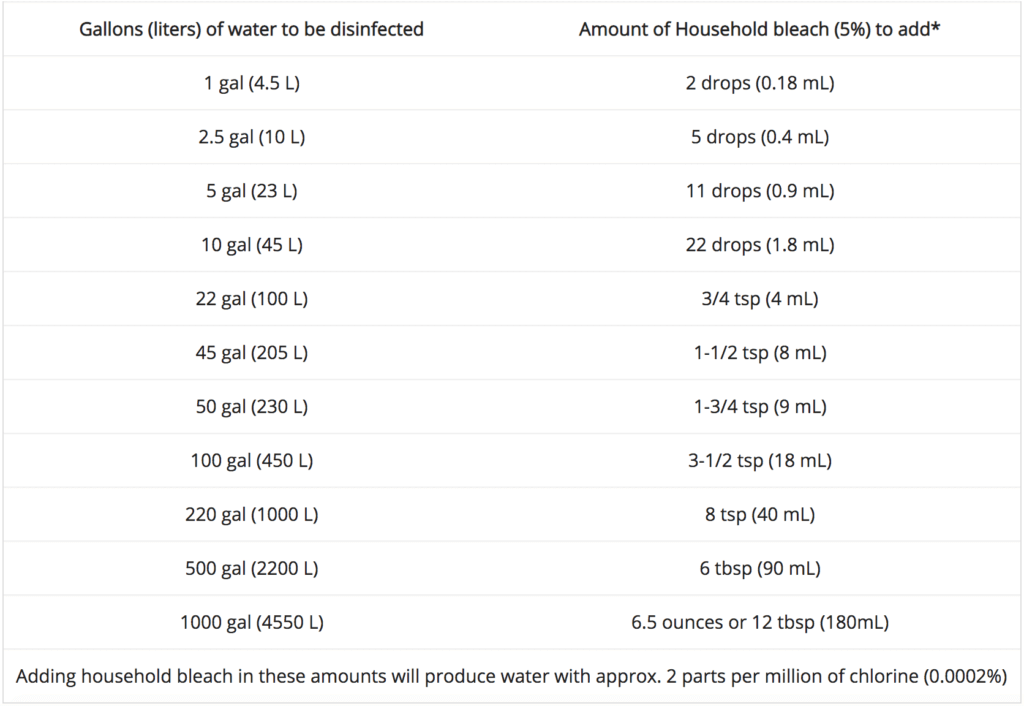
3- Food Storage
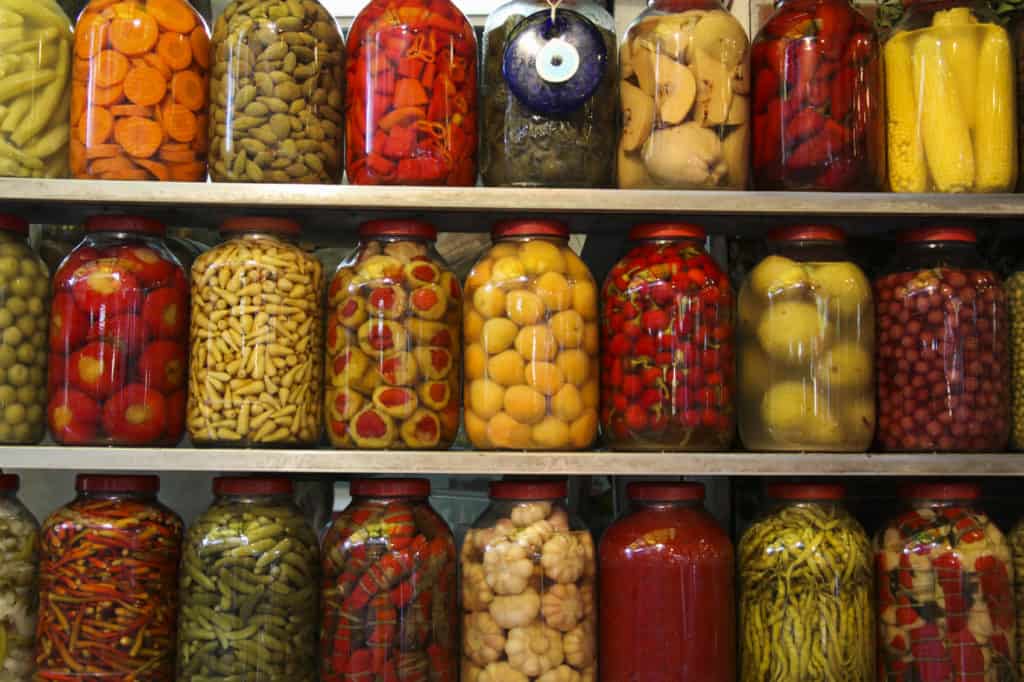 Buy and Store Plenty of Long-term Food Storage
You’ll find all sorts of different opinions online around how much food storage you should have on hand. Read.gov says at least 3 days. FEMA says at least 10 days. And everyone else ranges between 3 months and as much as you can possibly store.
I am of the opinion that you should have as somewhere in between the 3 months and as much as you can possibly store. As I mentioned above, you need to evaluate your family and your current situation. If there is a natural disaster that takes out the power and gas for 3 weeks, do you have enough food on hand to take care of your family? What if you get let go from your job and can’t find another job for 3+ months? Wouldn’t it be nice to not have to worry about feeding your kids?
How much food you store is totally up to you. Also, there is nothing wrong with storing up 3 weeks worth of food and then evaluating to see if you’d like to continue growing that storage to 3+ months. You might think differently after you’ve taken the time to build up your 3 week supply.
What Kind of Food Storage Should I Buy?
There are a few different levels of food storage buying.
Phase 1: Short term food storage (3 weeks to 3-months worth)
Phase 2: Long term food storage (3 to 12 months+ worth)
The short term food storage should be foods that you like eating right now. You don’t need to go crazy and buy buckets of wheat for phase 1. As long as you enjoy eating the food, I would start by buying foods that won’t expire soon and that are easy to make.
Examples:
Buy and Store Plenty of Long-term Food Storage
You’ll find all sorts of different opinions online around how much food storage you should have on hand. Read.gov says at least 3 days. FEMA says at least 10 days. And everyone else ranges between 3 months and as much as you can possibly store.
I am of the opinion that you should have as somewhere in between the 3 months and as much as you can possibly store. As I mentioned above, you need to evaluate your family and your current situation. If there is a natural disaster that takes out the power and gas for 3 weeks, do you have enough food on hand to take care of your family? What if you get let go from your job and can’t find another job for 3+ months? Wouldn’t it be nice to not have to worry about feeding your kids?
How much food you store is totally up to you. Also, there is nothing wrong with storing up 3 weeks worth of food and then evaluating to see if you’d like to continue growing that storage to 3+ months. You might think differently after you’ve taken the time to build up your 3 week supply.
What Kind of Food Storage Should I Buy?
There are a few different levels of food storage buying.
Phase 1: Short term food storage (3 weeks to 3-months worth)
Phase 2: Long term food storage (3 to 12 months+ worth)
The short term food storage should be foods that you like eating right now. You don’t need to go crazy and buy buckets of wheat for phase 1. As long as you enjoy eating the food, I would start by buying foods that won’t expire soon and that are easy to make.
Examples:
- Mac and cheese
- Romen noodles
- Soups in a can
- Pasta and sauces
- Rice and beans
- Canned meats
- Canned veggies
- Crackers and chips
- Pancake mix
- Peanut butter and jelly/honey
- Granola bars
- Cereal
- Beef Jerky
4- None Food Essentials
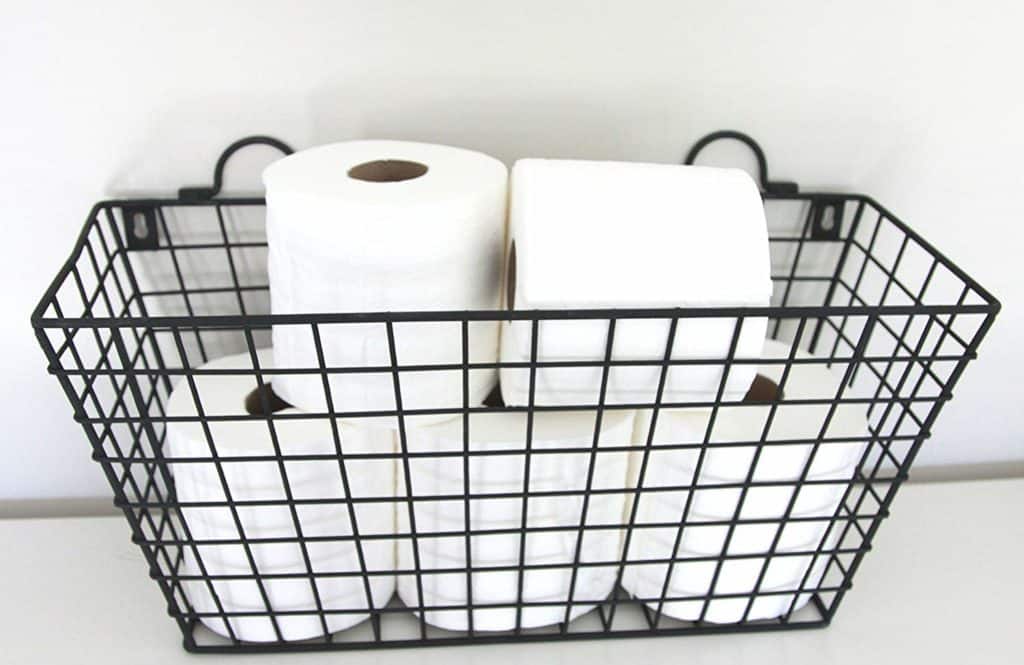 Buying These None Food Items to Stockpile (Trust me. You’ll thank me later)
Food and water are by far the most important items to stock up on, but once you start to feel good about the amount of food and water you have stored, you need to consider other items that will make your life easier after whatever you just lived through that is now making you use your supplies.
Think about it. There a lot of luxury items you probably wouldn’t want to run out of, but my guess is that running out of toilet paper would be one of the worst things to live without. Am I right?
Buy more feminine products than you think you’ll ever need. Not only will the females in your life thank you, but these can also be used in first aid situations.
Keeping up on your personal hygiene is very important as well. You will feel better about yourself and you will also have less risk of getting any sicknesses, infections, and cavities. Buy stuff like extra toothbrushes and toothpaste, floss, soap, deodorant, and Q-tips.
Along with toiletries, personal hygiene items, and medicines, I’d also recommend stocking up on the following.
Buying These None Food Items to Stockpile (Trust me. You’ll thank me later)
Food and water are by far the most important items to stock up on, but once you start to feel good about the amount of food and water you have stored, you need to consider other items that will make your life easier after whatever you just lived through that is now making you use your supplies.
Think about it. There a lot of luxury items you probably wouldn’t want to run out of, but my guess is that running out of toilet paper would be one of the worst things to live without. Am I right?
Buy more feminine products than you think you’ll ever need. Not only will the females in your life thank you, but these can also be used in first aid situations.
Keeping up on your personal hygiene is very important as well. You will feel better about yourself and you will also have less risk of getting any sicknesses, infections, and cavities. Buy stuff like extra toothbrushes and toothpaste, floss, soap, deodorant, and Q-tips.
Along with toiletries, personal hygiene items, and medicines, I’d also recommend stocking up on the following.
- Baby Products
- Binkies (pacifiers)
- Blankets
- Diapers
- Wipes
- Rash cream
- Food and formula
- Warm clothing for the babies
- First aid supplies
- Basic first aid kits
- Trauma kits
- Shelter and Sleeping
- Tents
- Sleeping bags
- Cots
- Blankets
- Around The House Items
- Garbage bags
- Cleaning/sanitary supplies
- Ziplock bags
- Items Your Grandma Used
- Clothespins
- Rope to make a clothesline
- Equipment (buckets, soap, scrubbers) to help wash clothing
- Navigation Instruments and Logistics
- Compass
- Paper maps of your area
- Weapons For Protection and Hunting
- Bow and arrow
- Slingshot
- Knives
- Tools For Repair and To Clean Up Debris
- Shovel and rakes
- Chain saw
- Other types of saws
- Hammer and nails
- Fuel For Cooking and Keeping Warm
- Wood
- Charcoal
- Butane
- Propane
- Kerosene
- Indoor and Outdoor Cooking Gear
- Butane tripod
- Propane stove
- Wood burning stove
- Dutch oven
- Solar oven
- Seeds For The Garden and Seeds For Sprouting
- Sprouting Seeds
- Beans
- Alfalfa
- Barley
- Basil
- Beets
- Broccoli
- Garden Seeds
- Radish
- Broccoli
- Onions
- Lettuce
- Kale
- Tomatoes
- Peppers
- Cabbage
- Corn
- Carrots
- Beets
- Swiss chard
- Pumpkin
- Beans
- Peas
- Soy
- Peanuts
- Sunflower
- Eggplant
- Sprouting Seeds
- Clothing For All Seasons And All Weather
- Jackets
- Socks
- Hats
- Pants
- Shirts
- Shoes
- Towles
- Tools to Help Start a Fire For Cooking, Cleaning, and Heating
- Matches
- Lighter
- Flint and steel
- Glass lens
- Friction sticks
- Reflective tools
- 9-volt battery and steel wool
5- Education and Skills
Learning how to use all of these tools is almost just as important as actually owning them. Just remember, if you do survive through a disaster and end up using your food storage and tools, you are going to want to know HOW to use them in the most efficient way. Chances are you will not have Google or Pinterest to help you out. It would be almost impossible to learn every possible skill that could benefit you in a situation like this, so I recommend you buy these physical books to have on hand. You can always reflect back on them when the time comes to help you get through almost any situation.Learn Valuable Survival Skills Through Reading
- Recommended Outdoor Survival Skills Books
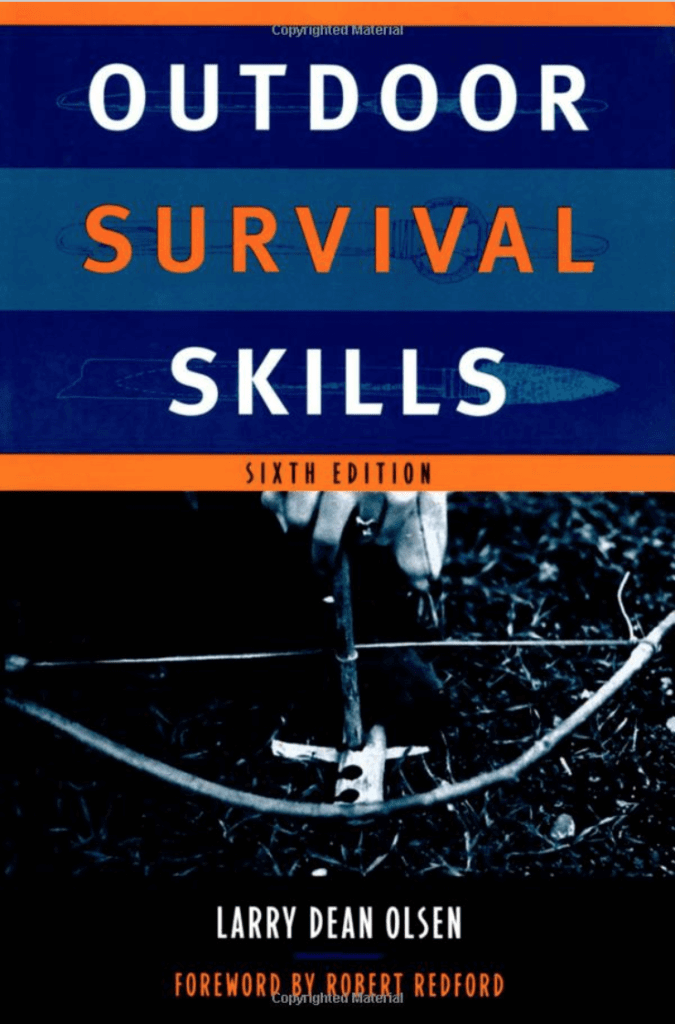
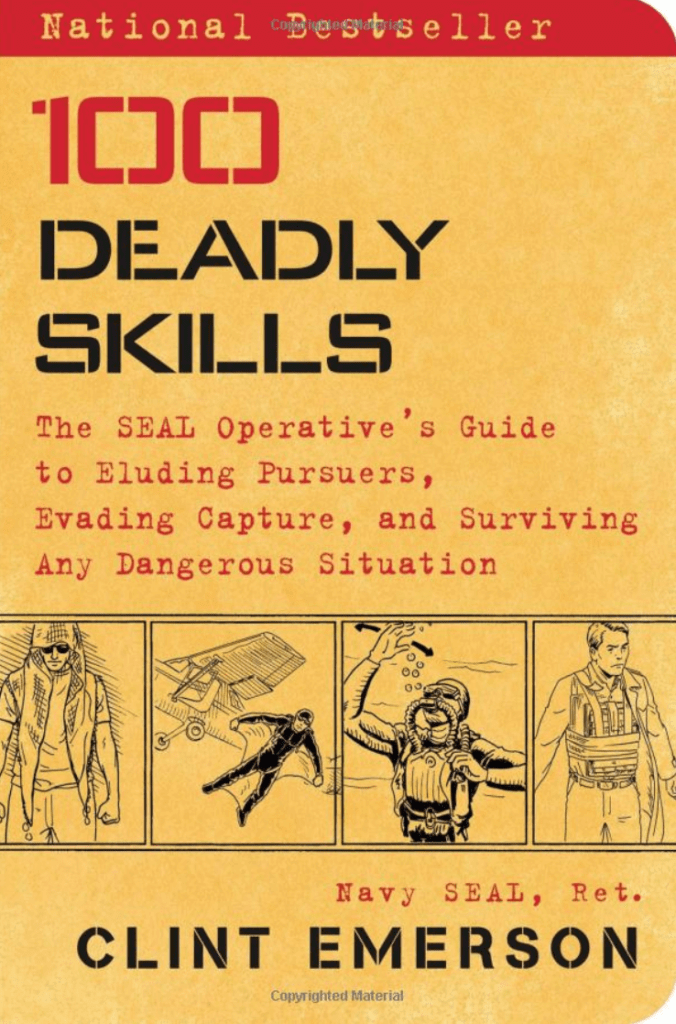
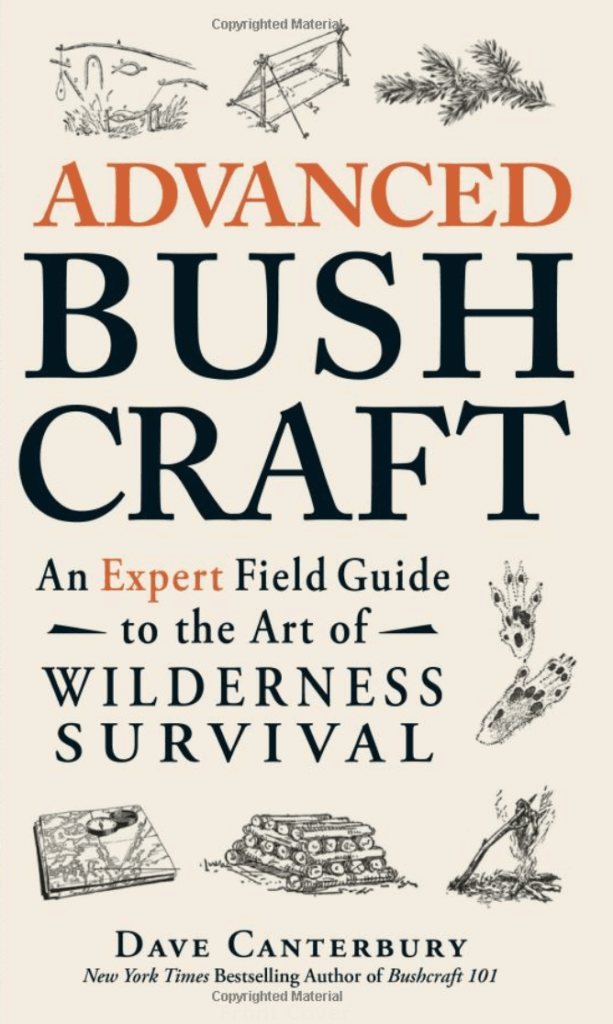
- Recommended Emergency Preparedness Books
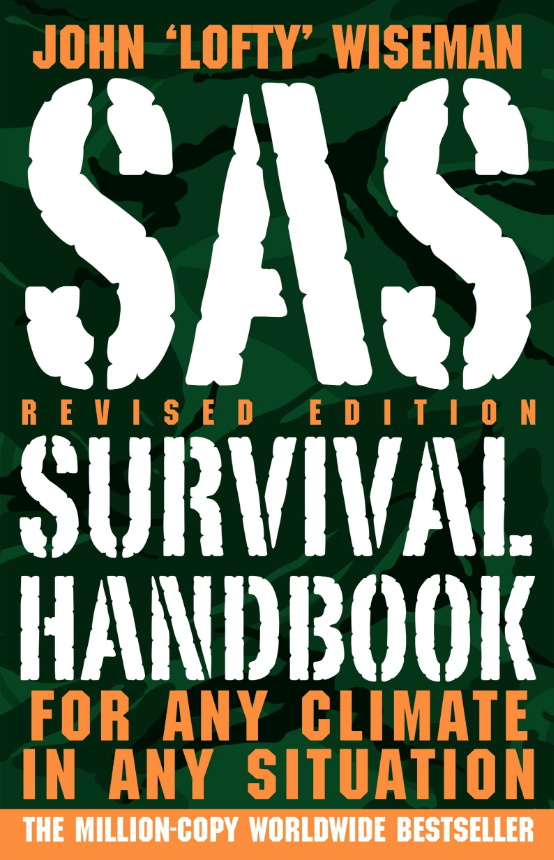
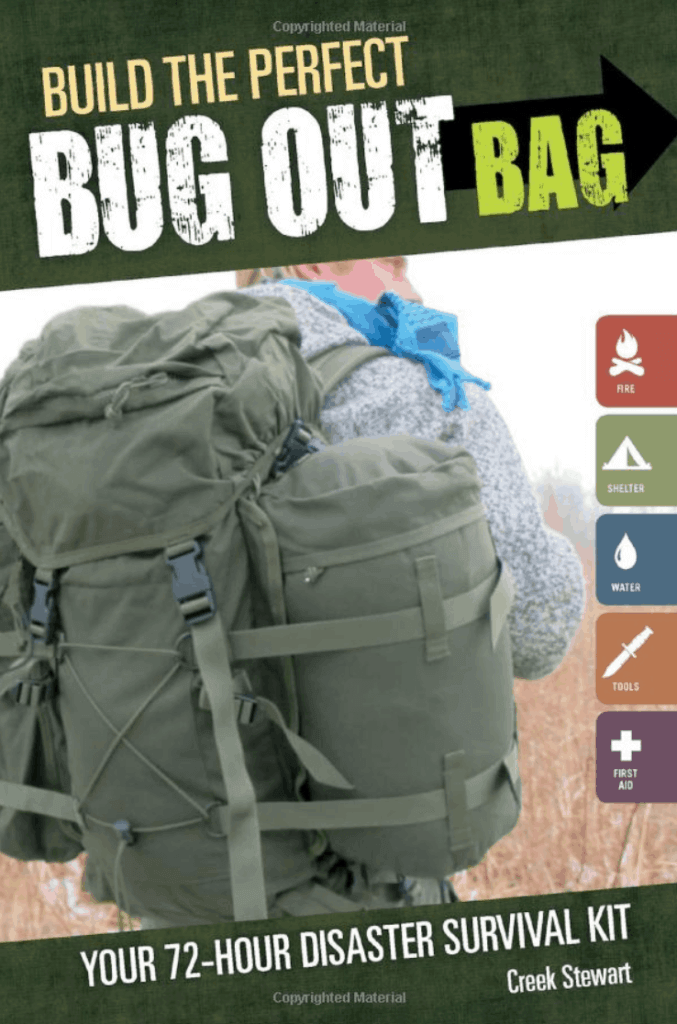
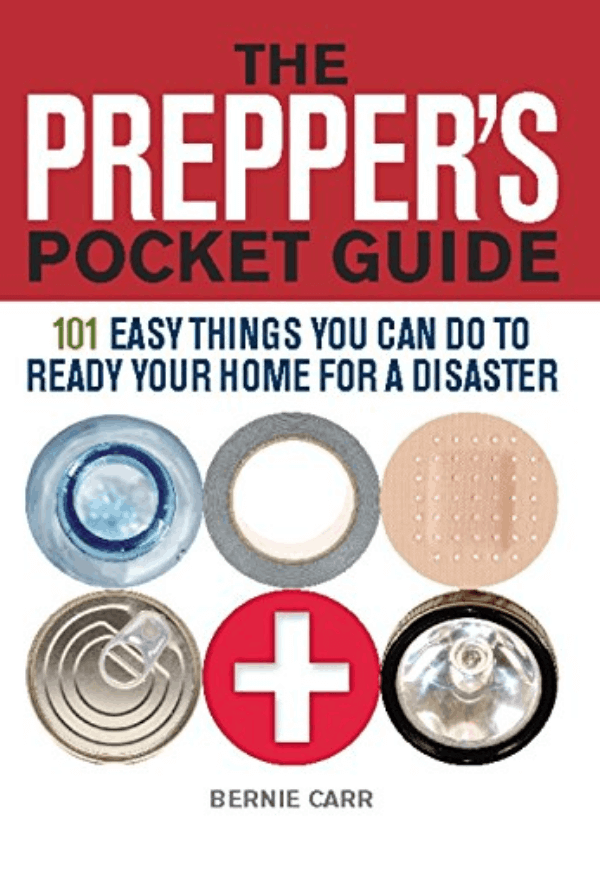
6- Disaster Planning, Drills, and Protocols
Have you ever wondered why we do fire drills while at school? Ever wonder why we teach kids to practice saying no to drugs before the time comes when they have to think about it? The human brain is an amazing thing. If we tell it to do something, it usually does it. The problem is that we have so many other chemical and hormones going on in our bodies, and sometimes our brains are affected by those other chemicals and hormones in a way that we kind of go brain dead. The human brain has 6 different sections.- Frontal Lobe
- Temporal Lobe
- Brainstem
- Cerebellum
- Occipital Lobe
- Parietal Lobe
 Think about it. Have you ever seen someone get into a car accident and then just sit there speechless? It’s because of this adrenaline. When our brains are filled with adrenaline we literally have zero ability to make decisions. Unfortunately, these are the times where we need to be able to make tough choices.
The good news is that our temporal lobe is there for back up. Our temporal lobe helps us with auditory processing, language comprehension, and memory and information retrieval.
Having these drills set to where we practice them over and over again is called a protocol. Every time we practice going through a protocol, it trains the temporal lobe to take over when the going gets tough.
Stop looking at these drills as a waste of time. Start looking at them as a temporal lobe training. This simple act just might save your life someday.
Think about it. Have you ever seen someone get into a car accident and then just sit there speechless? It’s because of this adrenaline. When our brains are filled with adrenaline we literally have zero ability to make decisions. Unfortunately, these are the times where we need to be able to make tough choices.
The good news is that our temporal lobe is there for back up. Our temporal lobe helps us with auditory processing, language comprehension, and memory and information retrieval.
Having these drills set to where we practice them over and over again is called a protocol. Every time we practice going through a protocol, it trains the temporal lobe to take over when the going gets tough.
Stop looking at these drills as a waste of time. Start looking at them as a temporal lobe training. This simple act just might save your life someday.
